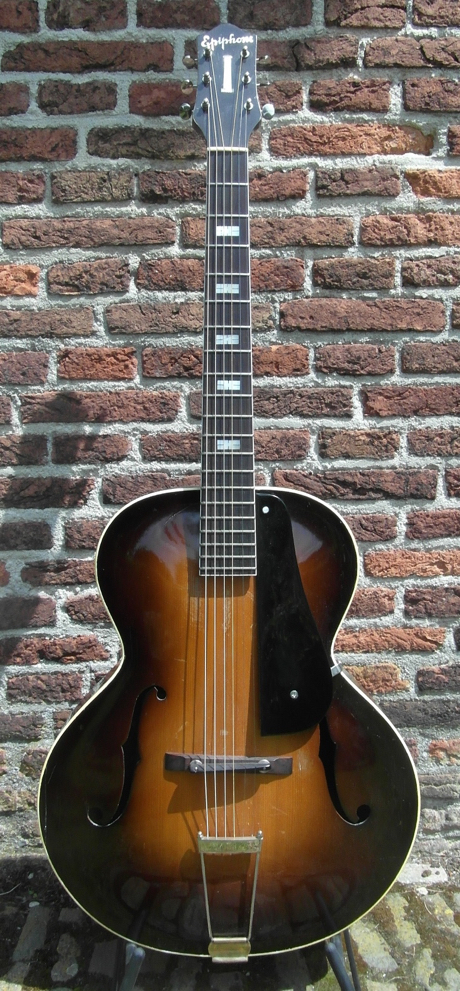
Close-up #5: 1935 Spartan Special
SN 8986
This guitar is part of Ruurd Feitsma's Dutch Archtop Guitar Museum (DAM) in Dalfsen, Netherlands – to my knowledge the world's first and only museum devoted exclusively to American archtop guitars of the 1920-50s. Centerpiece of the DAM's great collection is a group of more than 40 Epiphone guitars.
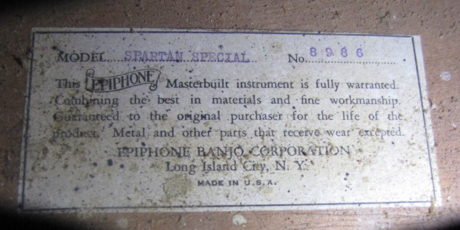
The label inside the guitar's body is of the "Long Island" type, with model name "Spartan Special" and number "8986" typed with blue ink. The Spartan first appeared in the 1934 catalog as the only archtop model with round soundhole. Priced at $100 the Spartan was obviously launched as a direct competitor to Gibson's L-4 model, a 16" wide round-hole archtop offered at the same $100 price.
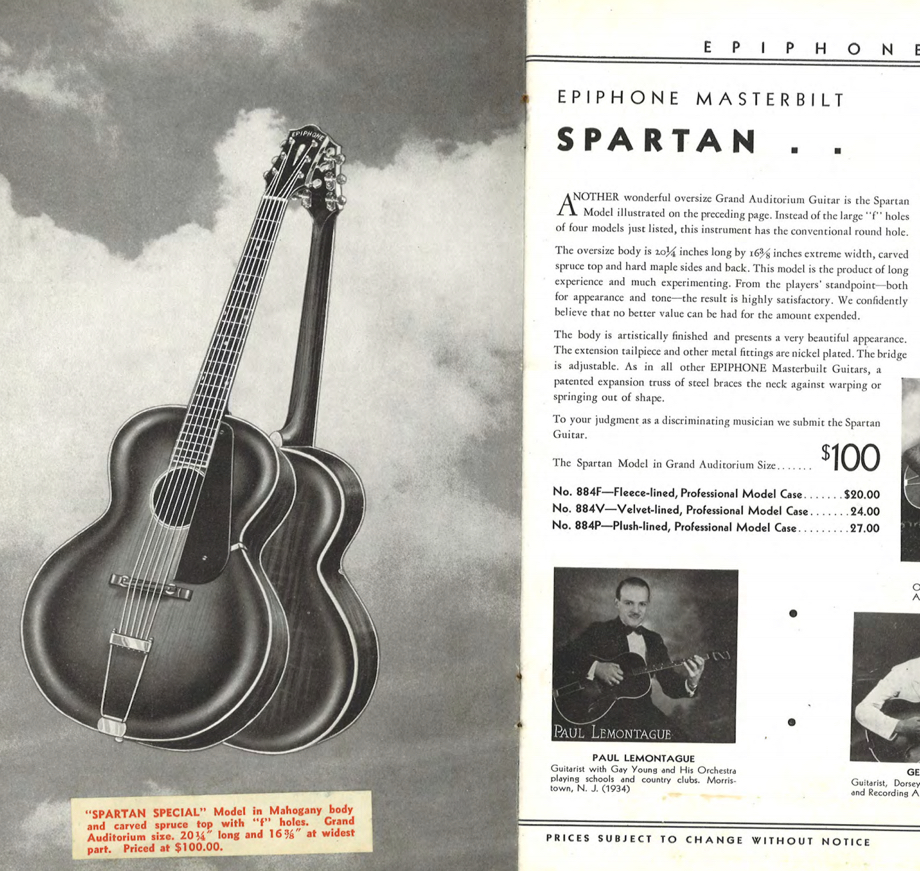
When you compare this guitar with the catalog picture it is obvious why this Spartan was labeled with the attribute "Special": It has f-holes.
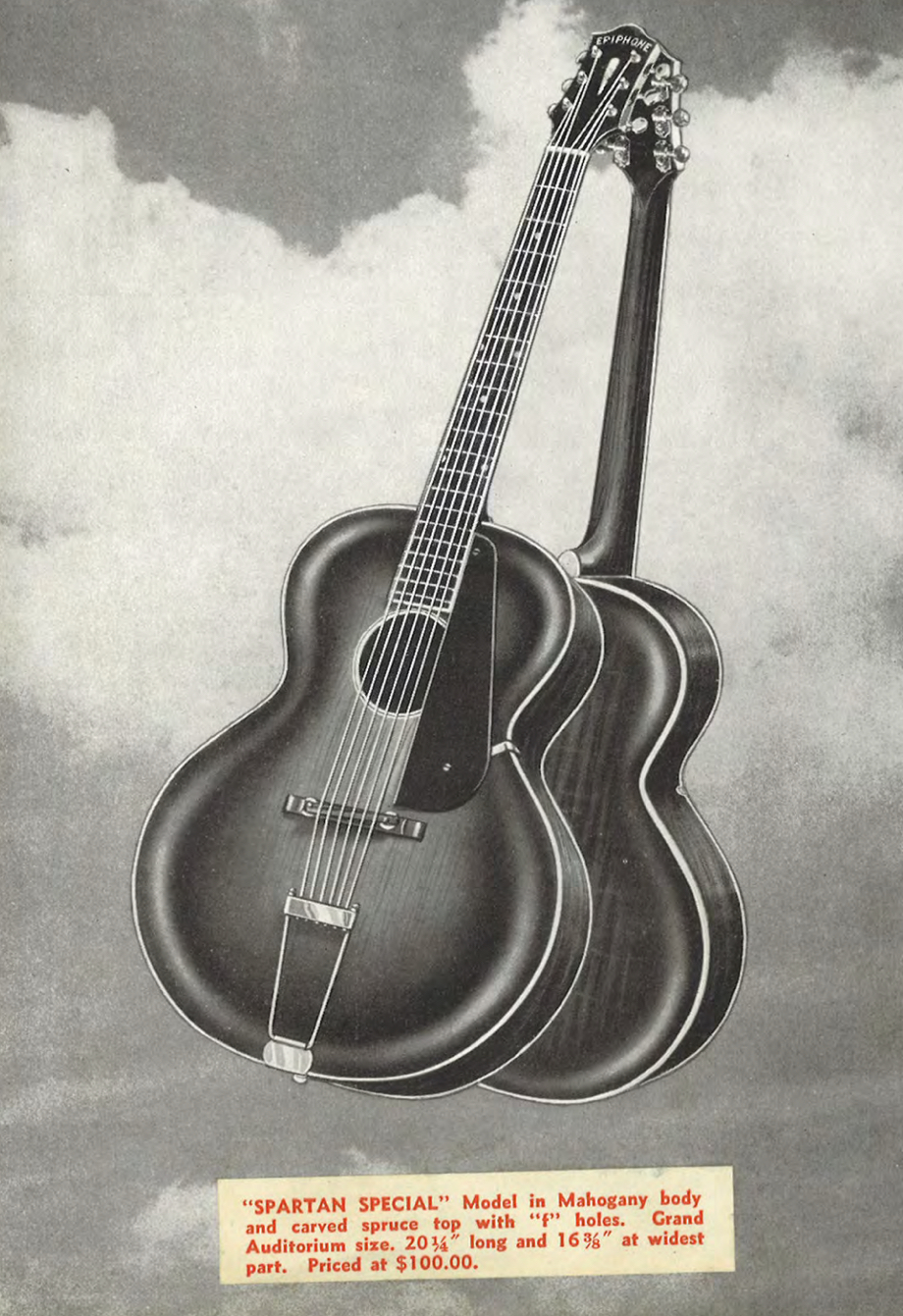
Epiphone did not print a new catalog in 1935 – they kept using copies of the 1934 catalog, however with printed stickers on some pages to reflect changed model features. The sticker on the Spartan's page states that the "Spartan Special" model had a mahogany body and f-holes.
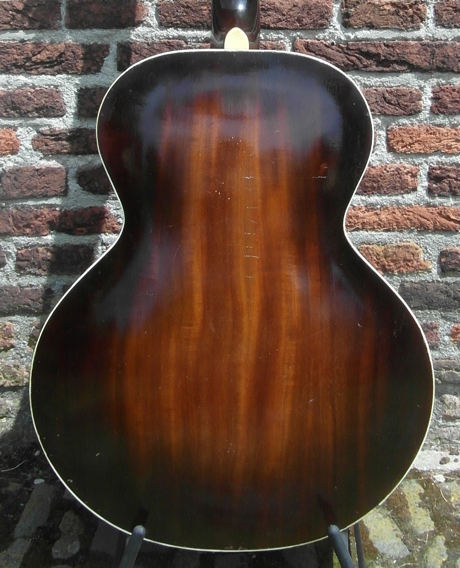
SN 8986 is the earliest known Spartan Special, and the back appears to be a 1-piece pressed laminated plate of mahogany – with an attractive, stripey figure also present on other mahogany models of that period. The earlier 1934 Spartan had a pressed maple back, while later in 1935 the model switched to pressed walnut. By 1937 the back was upgraded to 2-piece carved walnut.
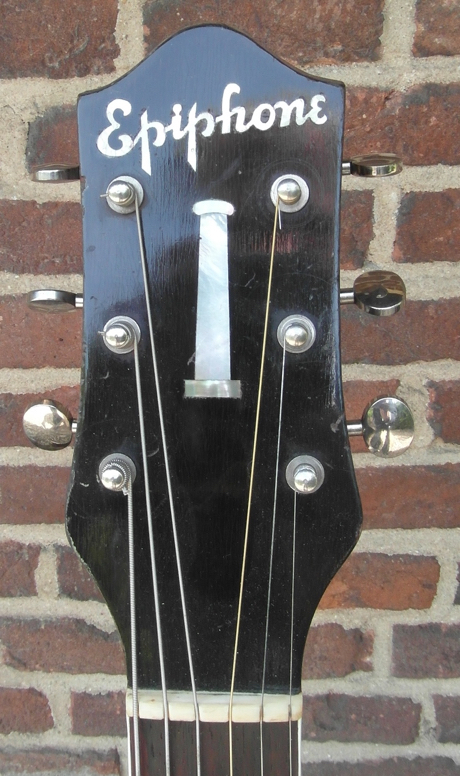
By 1935 the Spartan had received it's iconic headstock inlay – a greek column. While this example already has the script logo, there is still no binding on the headstock – introduced soon after this example was built.

The clipped-point, nickel-plated Grover tuners with oval metal buttons appear to be original, however two of the tuners have newer replacement Phillips gear screws.
The f-hole Spartan was not considered "special" for long: By the time the 1936 catalog came out, the new features had become standard, and the model simply labeled "Spartan" again.Today, round-soundhole archtops are appreciated by many players for their particular sound. Interestingly, when Epiphone recently launched a new series of vintage-inspired acoustic archtops, two of the models are available in both f-hole and round-hole versions – no matter that the original De Luxe and Zenith never had a round hole in the past ...
However in the mid-1930s this instrument variety was obviously not in high demand: Along with Epiphone also Gibson and Martin soon switched all their round-hole archtop models to f-holes.
(Oct 5, 2016)